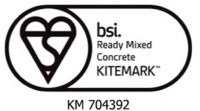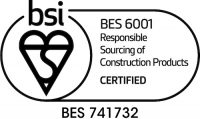When we think about laying concrete, the average person who hasn’t come into contact with the industry might think it’s a simple case of making a mix, pouring it and then letting it sit to dry out before becoming a solid and impermeable surface.
But this is far from being the case, in fact the setting of the concrete is one of the most vital parts of the process as you need it to set in order to carry out other work but you don’t want it to dry out too quickly. In this article we’ll explain the process of what is commonly known as curing concrete, and when it needs to be done.
Why do you need to cure concrete?
Concrete needs to retain a certain amount of moisture while it sets in order to create the strongest bond between all of the ingredients in the mix. If the concrete sets too quickly it will be weakened in places and will not be able to stand up to the rigorous strain it may be required to take.
How can you cure concrete?
There are many different methods available to you for curing concrete, and each has its advantages and disadvantages. If you have a small amount to cure then you can spray the surface evenly and often – if you try to do this on a larger expanse of fresh concrete you can end up wasting a lot of water. Ponding is the process of leaving a dam wall around the concrete made of sand and flooding it. This gives a constant source of water for the concrete but means any other work in the area has to wait, making it more time consuming.
More common in the curing of larger surfaces of concrete is the use of plastic wrap to protect against evaporation. Special oils and compounds can also be used which create a sealed layer or a moisture retaining cover can be laid on the top to provide a steady source of moisture.
When should concrete be cured?
Once you mix the aggregate with water the process of hardening begins, which is why you need to be fully prepared before you begin. Have all the important tools at hand and decide on which technique you’re going to use for curing well in advance. Once the concrete is poured and levelled you can put in place your curing technique, whether it’s a plastic wrap or an oil compound.
Hot or cold weather?
The weather can have an impact on the speed of concrete setting: if it’s too hot then the moisture in the mix will evaporate too quickly for the ingredients to truly mesh; if it’s too cold then the moisture could freeze and your concrete will flake and lose its integrity.
If you’re pouring when it’s humid then try adding ice to the mixture instead of water, or simply hold off until the temperature drops. If it’s too cold outside then use insulating blankets or alternatively, use heaters.
Thankfully there aren’t many areas in the UK which see such extremes in temperature, but it’s worth bearing in mind if you happen to be pouring a mix in the hottest week of the year or during a freak snow storm.
Whether you require concrete for a commercial or domestic project then look no further than the experts at EasyMix Concrete. To discuss your needs with our professional team simply contact us today.



